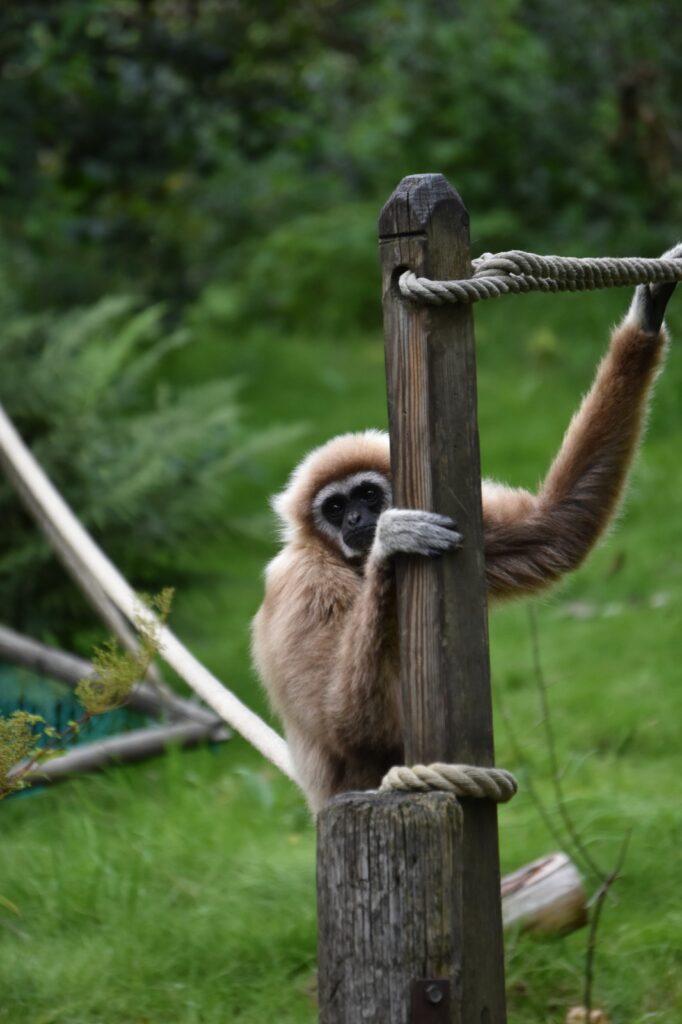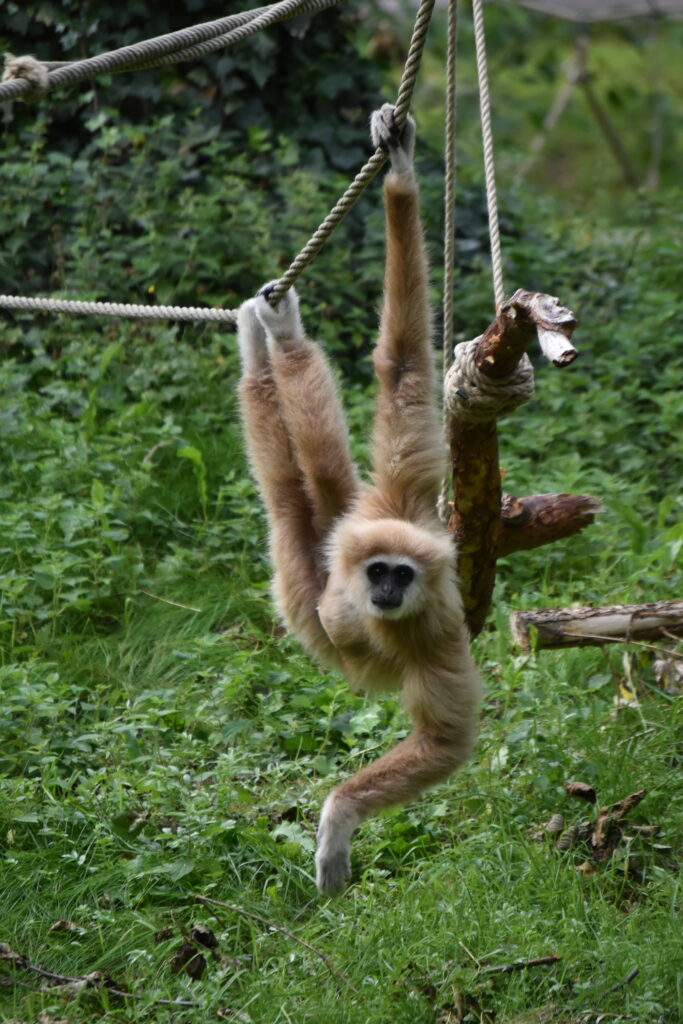Why did Lelle differ?

As seen by the logistic regression the ability to visually discriminate between two simultaneously presented pieces differed between the gibbons. This goes in line with the previous results where Lelle displayed a preference for the larger of the two pieces when the weber fraction was higher in comparison to the results of the other gibbons.
These results could be connected to diminishing eyesight correlating with age (like in humans) and thus it may become more difficult for an older gibbon to distinguish between the size of food pieces. The difference in how the gibbons displayed clear preferences could also have been affected by a side bias since, from the observer’s perspective, Lelle often chose the food piece closest to him. It has been shown in prosimians that handedness may increase with increasing age.

Social animals frequently exhibit dominance hierarchies, in which access to resources is privileged for those with a higher rank. Males with higher rank may therefore have first dibs on high-profitability food, allowing them to spend more time doing things other than eating. As Lelle was the oldest male in the gibbon group studied here it is plausible that he focused more on other activities such as social and protective behaviours rather than food collection. It is, however, important to remember that gibbons have been reported to engage in food sharing (i.e., allow others to actively take from them) in both captive and natural environments and that there is no obvious dominance of one sex over the other

Personal food preferences may also have influenced Lelle’s choices, since perhaps eggplant was not his preferred food choice and seeing how the gibbons reacted when given a more attractive food (like blood pudding) it was clear that the competition for such a food source was greater. Unfortunately, I could not regularly utilize a food source like blood pudding since it was not part of the gibbons’ everyday diet at the wildlife park.
The learning speed of Capuchin monkeys has been reported to depend on the manner of stimulus presentation, even in relatively simple visual discrimination situations where a single perceptual variable (i.e., size) has to be judged. This could have had an impact on the performance of the gibbons in the current study.
Another aspect which could affect the results of a study such as this is called precedence. “Precedence refers to the level of processing (global or local) to which attention is first directed”
Future research
The results of this study show that gibbons are able to distinguish between small size differences between cube-shaped food items, however more studies to determine the limits of their visual size (=volume) discrimination are required. One way would be to employ a two-choice test based on an operant conditioning procedure.